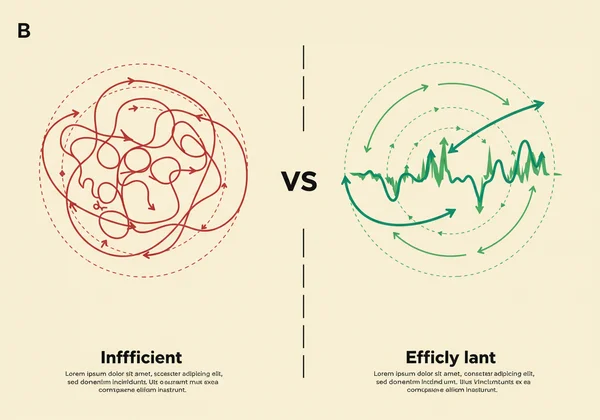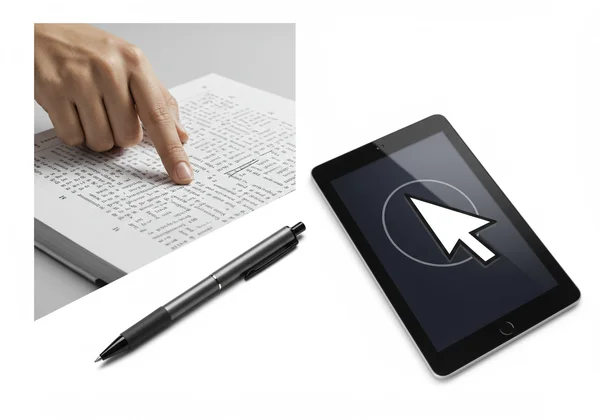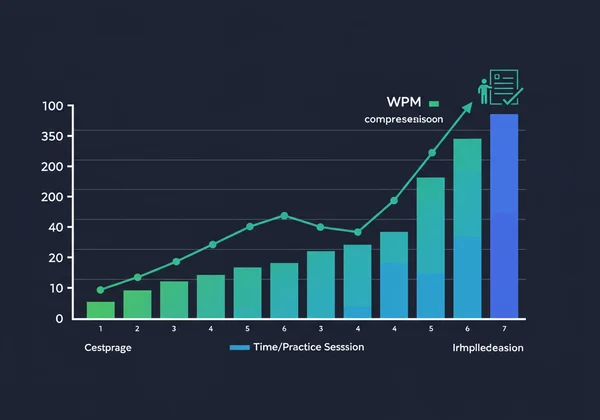Master the Pointer Method: Boost Your Reading Speed Test Results Today
Are you buried under a mountain of textbooks, reports, or emails? Do you wish you could get through your reading list faster without sacrificing comprehension? If you're tired of slow reading holding you back, you've come to the right place. This guide will introduce you to the Pointer Method, a powerful and scientifically-backed reading speed technique designed to break your inefficient habits. By learning this simple skill, you can unlock your true reading potential, and the best way to see the results is to try our free tool today.
The Pointer Method is one of the most effective speed reading techniques because it directly tackles the root causes of slow reading. It’s not a magic trick; it’s a training system for your eyes and brain. Whether you're a student facing exams, a professional drowning in documents, or a lifelong learner eager to absorb more knowledge, this method can fundamentally change the way you read. Let’s dive into how it works and how you can start using it immediately.

What is the Pointer Method and Why Does it Work?
Simply put, the Pointer Method uses a physical or digital guide—like your finger, a pen, or your mouse cursor—to trace the words as you read. This simple action creates a visual guide for your eyes, forcing them to move more smoothly and quickly across the page. It might sound basic, but its effectiveness lies in its ability to overcome two of the biggest obstacles to fast reading: regression and subvocalization.
By providing a steady pacer, the method helps you build a consistent reading rhythm, which is the first step toward improving your average reading speed and overall efficiency.
Understanding Common Reading Habits: Regression and Subvocalization
Most of us were taught to read in a way that is no longer effective for the volume of information we face today. We develop habits that slow us down without even realizing it. The most common of these are regression, the act of unconsciously re-reading words or sentences, and subvocalization, the habit of silently "saying" each word in your head.
Regression breaks your reading flow and wastes precious time, often stemming from a lack of focus. Subvocalization limits your reading speed to your talking speed, creating an unnecessary bottleneck. The Pointer Method helps to reduce regression by giving your eyes a target to follow, preventing them from wandering back. As you move the pointer faster, you also give your brain less time to subvocalize every word, encouraging it to process words in chunks instead.

The Science Behind Visual Pacing and Focus
This technique's power lies in the concept of visual pacing. Your eyes are naturally drawn to motion. When a pointer moves steadily across a line of text, it creates a focal point that captures your attention and guides your eye movements. This prevents your eyes from making erratic jumps (saccades) and lengthy pauses (fixations), which are characteristic of inefficient reading.
This focused movement trains your brain for faster, smoother processing. By setting your own pace, you take control, rather than letting old habits dictate your reading speed. Consistent practice reinforces these new neural pathways, making fast, focused reading your new default. Ready to see how your current habits measure up? Take a baseline reading speed test before you start.
How to Apply the Pointer Method for Increased WPM
Applying the Pointer Method is simple, but it requires conscious effort to build the habit. The goal is to move from a slow, deliberate practice to a natural, effortless flow. This section will guide you through the exact steps to begin your journey toward a significantly increased WPM (words per minute). Remember, the key is consistency.
A few minutes of focused practice each day can yield dramatic improvements. The more you integrate this technique, the faster you'll see your WPM climb. It's a skill that builds on itself, so let's get started with the fundamentals.
Step-by-Step Guide to Practicing the Pointer Method
Follow these steps to begin mastering the Pointer Method. It's best to start with easy, enjoyable material before moving on to more complex texts like academic papers or dense reports.
-
Select Your Pointer: Choose a tool to guide your eyes. Your index finger is the most convenient option, but a pen (with the cap on) or a stylus also works perfectly.
-
Position Your Hand: Hold the pointer comfortably. You will use it to underline the line of text you are reading, moving it from left to right.
-
Start Pacing: Begin moving your pointer smoothly under the words at a slightly faster pace than you would normally read. Your eyes should follow the tip of the pointer, not the words themselves.
-
Stay Consistent: Maintain a steady, uninterrupted motion. Do not stop or go back, even if you feel you’ve missed something. The primary goal of this drill is to train your eyes to move forward continuously.
-
Gradually Increase Speed: As you become more comfortable, gradually increase the speed at which you move the pointer. Push yourself just outside your comfort zone. Your comprehension might dip initially, but it will catch up with practice.

Choosing Your Ideal Pointer Tool (and Why it Matters)
While your finger is always available, the type of pointer tool you use can make a difference. A thin object like a capped pen or a chopstick can help you be more precise and cover less of the text below. For digital reading, your mouse cursor is the perfect pacer. You can even customize its size and color to make it a more effective visual guide.
The most important factor is that the tool feels comfortable and doesn't distract you. Experiment with different options to see what works best for your reading style. After a few practice sessions, be sure to measure your progress with a WPM test to see the tangible results of your efforts.

Beyond Speed: Enhancing Comprehension with Your Pointer
A common concern with speed reading is the fear of sacrificing understanding for pace. However, the Pointer Method, when applied correctly, can actually lead to enhancing comprehension. True reading efficiency isn't just about speed; it's about how much you absorb and retain. This is why our tool provides a dual assessment, including a reading comprehension test.
By forcing your eyes to move forward and keeping you engaged with the text, the pointer minimizes distractions. This heightened focus allows your brain to dedicate more resources to processing the meaning of the words, rather than managing eye movements.
Tips for Maintaining Focus and Understanding
Improved focus is a natural byproduct of the Pointer Method. As you guide your eyes with your hand, you create a powerful mind-body connection that keeps you anchored to the text. This helps shut out both internal distractions (like mind-wandering) and external ones.
To further boost your focus and understanding, try to grasp ideas in chunks rather than focusing on individual words. The pointer helps with this by encouraging a smoother, faster flow, which naturally pushes you to see phrases and concepts as a whole. Remember to stay relaxed; tension can hinder both speed and comprehension.
Integrating the Pointer Method into Your Daily Reading Routine
To make the Pointer Method a permanent skill, you must integrate it into your daily reading routine. Start by using it for 10-15 minutes a day with non-critical material, like news articles or blog posts. As it becomes more natural, begin applying it to your work reports, emails, and study materials.
The goal is to make it an automatic habit, just like tying your shoes. Soon, you won’t even have to think about it. The more you use it, the more you will strengthen the connection between your eyes and brain, creating a highly efficient reading system that will serve you for life.
Your Next Steps to Reading Mastery: Practice and Measure
You now have the knowledge and the steps to master the Pointer Method, a technique that can genuinely double your reading speed. But learning is just the first step; mastery comes from consistent practice and objective measurement. By applying this method daily, you are actively rewiring your brain for high-performance reading.
Don't just guess if you're improving—know for sure. The only way to track your progress accurately is by regularly testing your words per minute and comprehension. That's exactly where our tool comes in.
Ready to take the next step on your journey to reading mastery? Visit our site now to take your free, scientific reading speed test. Find your baseline WPM, practice the Pointer Method, and then return to see just how much you've improved!

Frequently Asked Questions About the Pointer Method
How can I improve my reading speed and comprehension?
Improving reading speed and comprehension requires a balanced approach. Techniques like the Pointer Method are excellent for increasing speed by reducing regression and subvocalization. To ensure comprehension keeps up, practice active reading: ask questions about the text, summarize paragraphs in your mind, and focus on grasping key ideas instead of just words. Regularly using a tool that offers a WPM and comprehension test is the best way to monitor and balance both skills.
What is a good reading speed to aim for?
While the average adult reads at about 200-250 WPM, a good reading speed is subjective and depends on your goals. For casual reading, 300-400 WPM is a great target that allows for solid comprehension. With techniques like the Pointer Method, many people can reach 500-700 WPM or even higher for general material. The key is to find a speed where you can read quickly while still retaining the information you need.
Does using a pointer help with subvocalization when reading?
Yes, using a pointer is one of the most effective ways to reduce subvocalization. By moving the pointer faster than you can comfortably "speak" the words in your head, you force your brain to switch from auditory processing to visual processing. It starts to recognize words and phrases as whole concepts without needing the internal monologue, which is a major breakthrough for increasing your reading pace.
What is the average WPM for an adult, and how does the pointer method compare?
The average WPM for an adult is typically in the 200-250 range. However, this speed is often limited by inefficient habits learned in childhood. The Pointer Method directly targets these habits. By implementing it consistently, it is realistic for an average reader to double their speed to 400-500 WPM while maintaining or even improving comprehension, putting them well above the average.